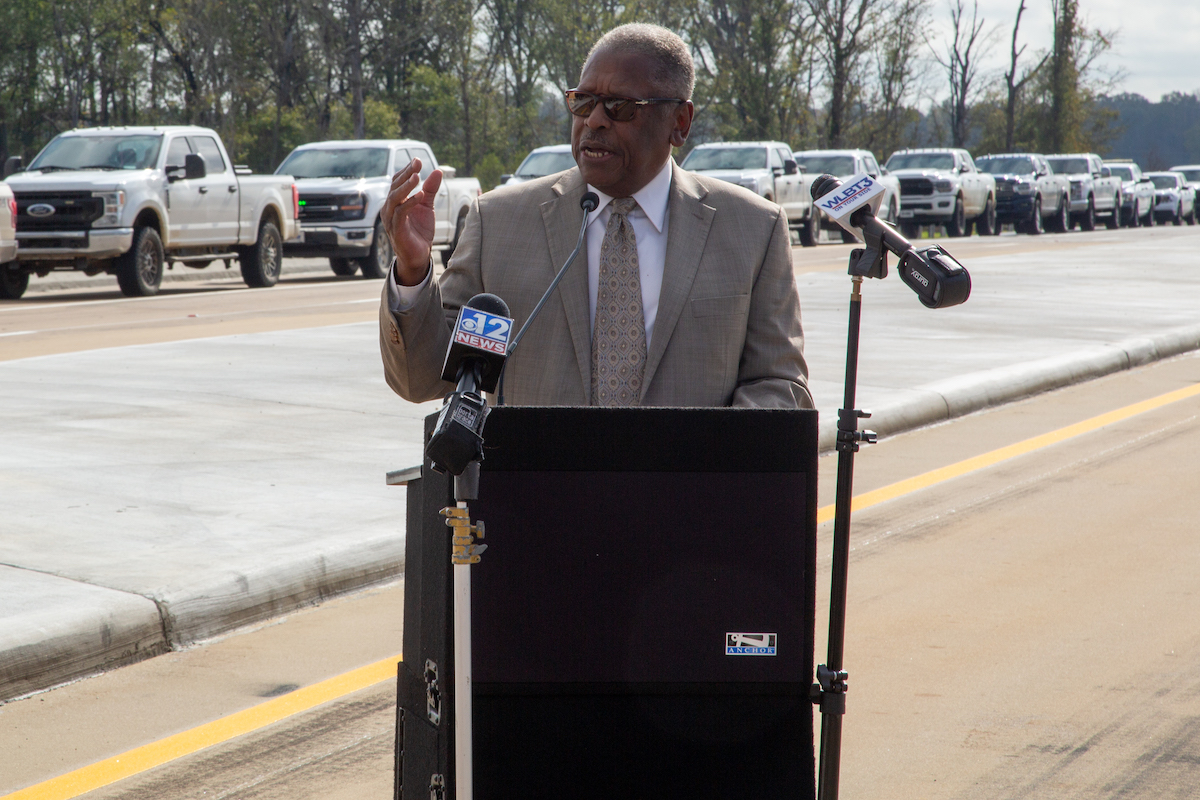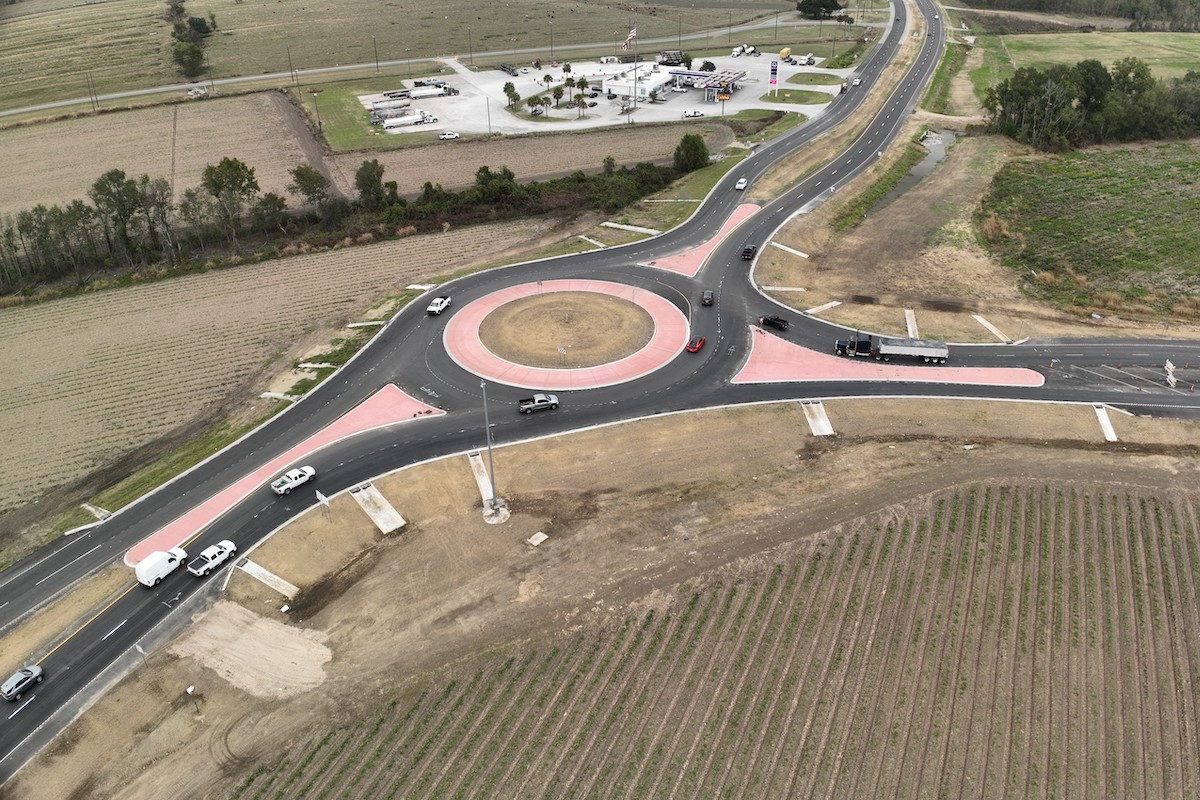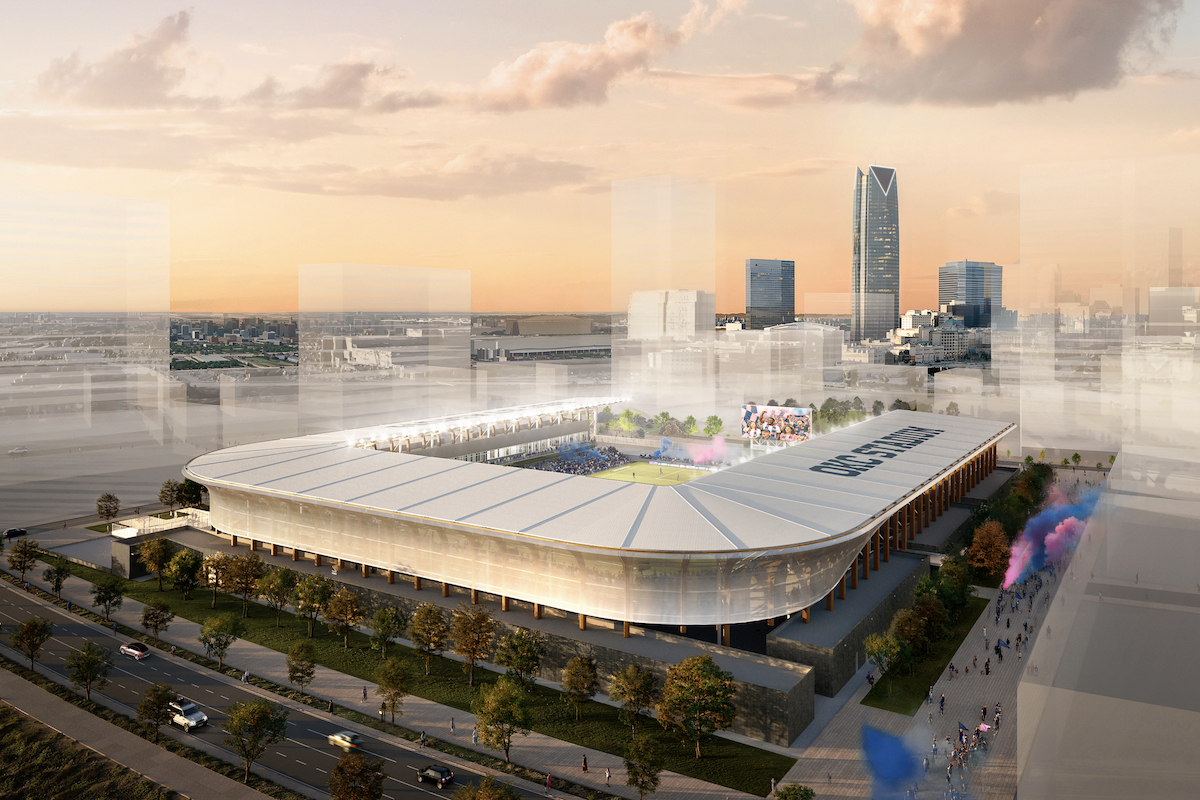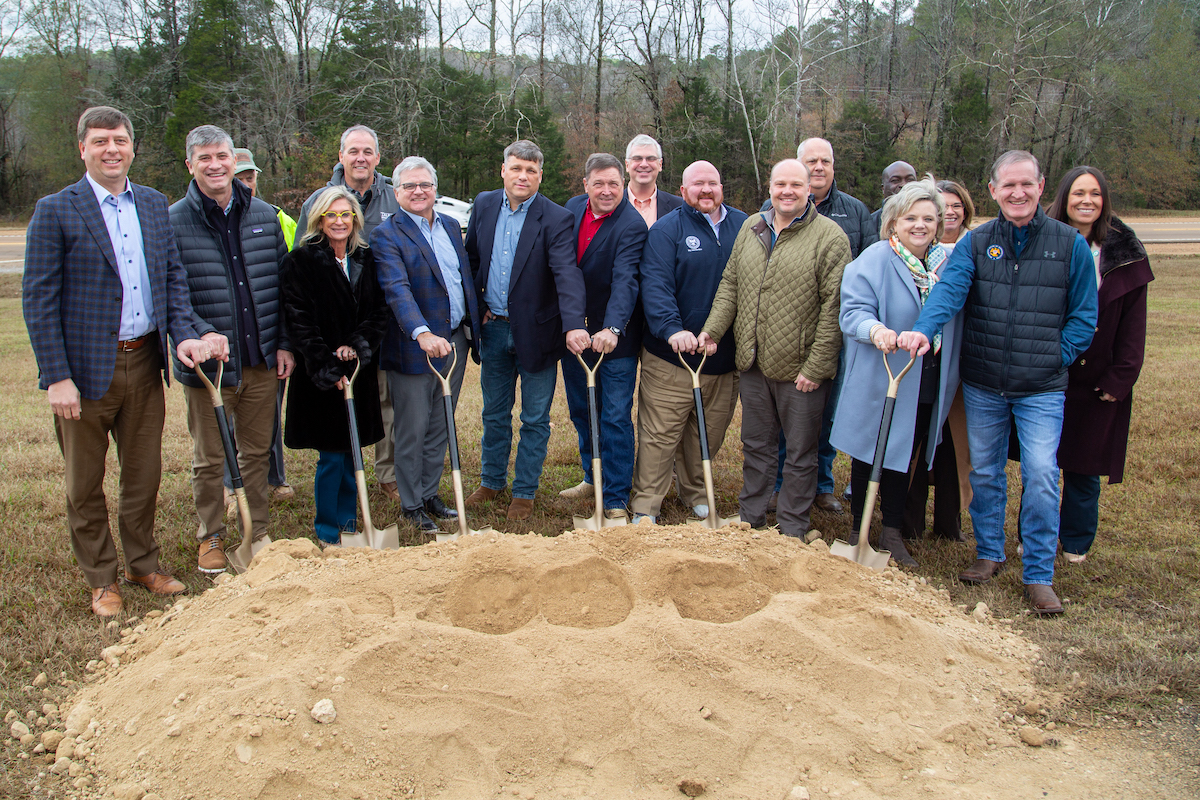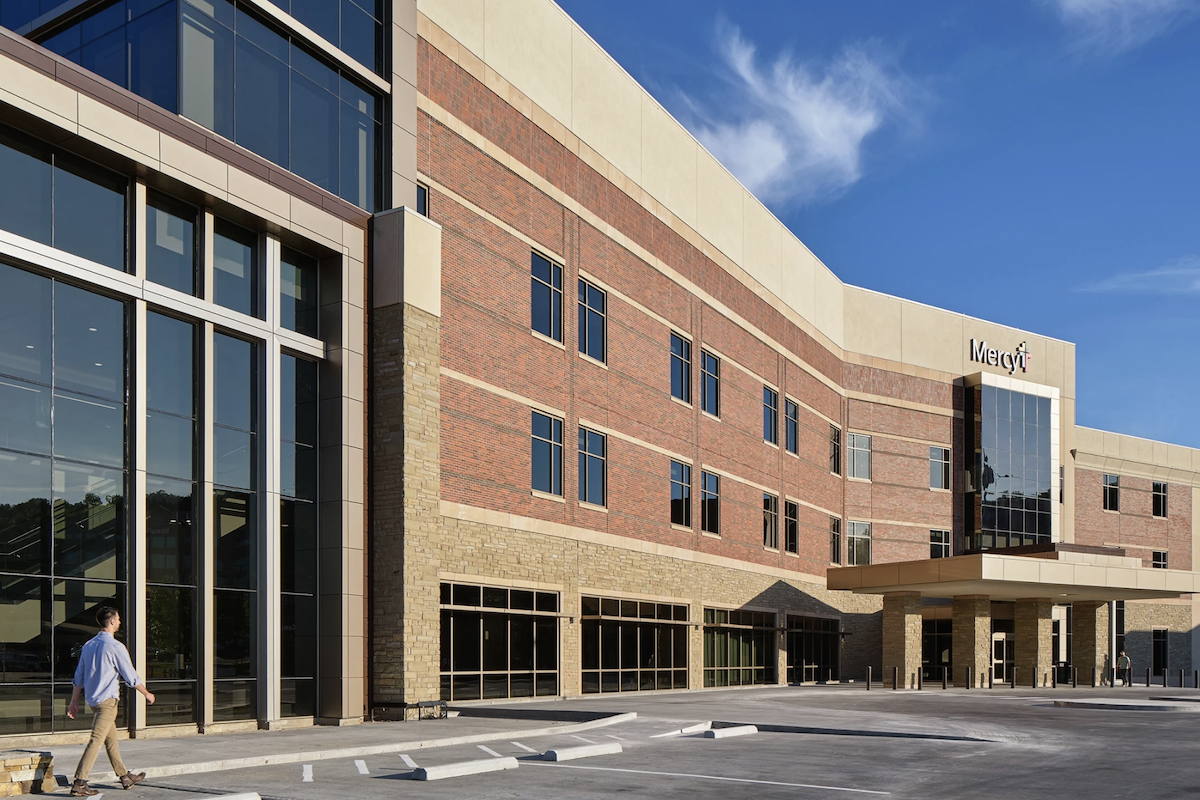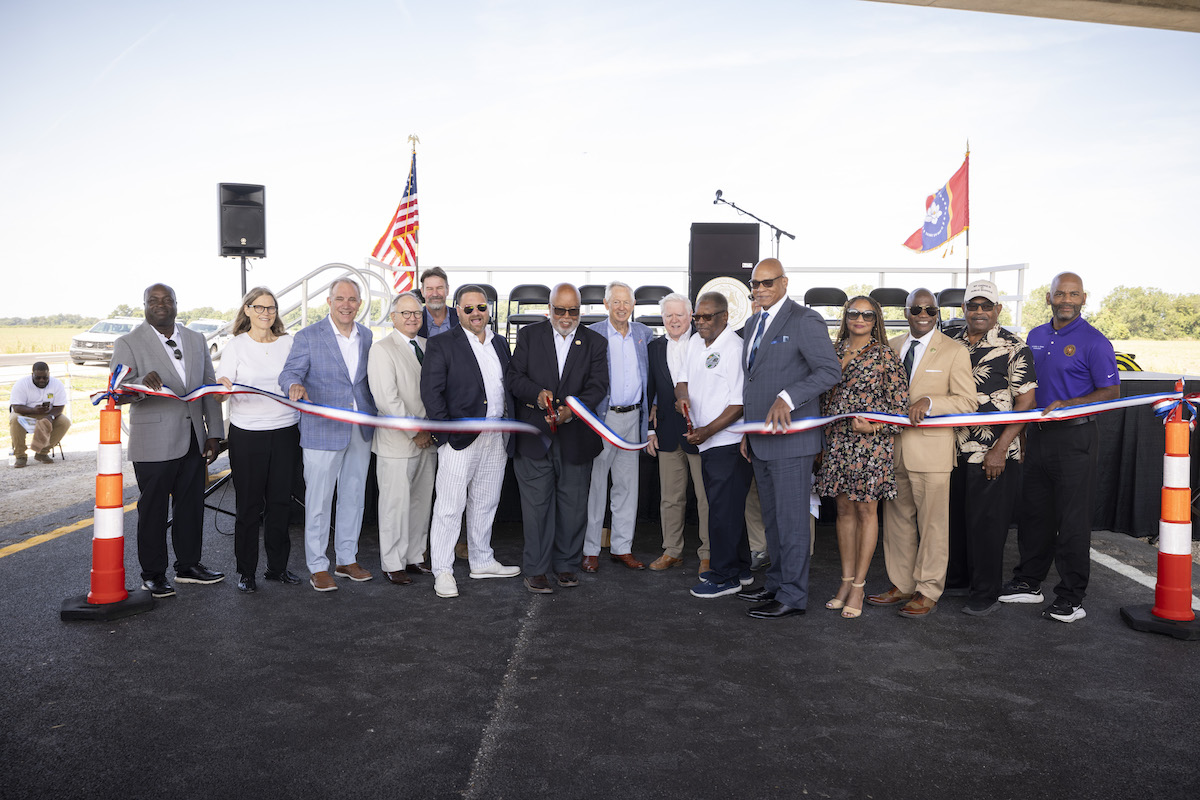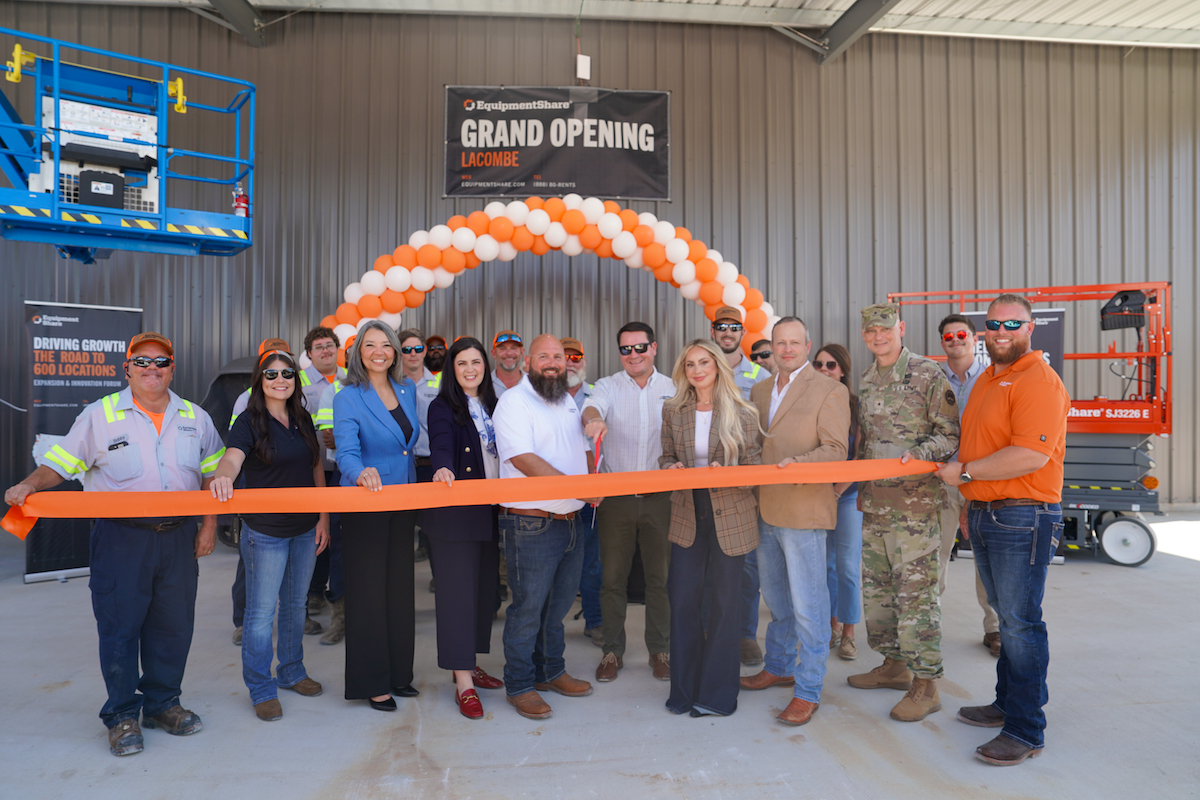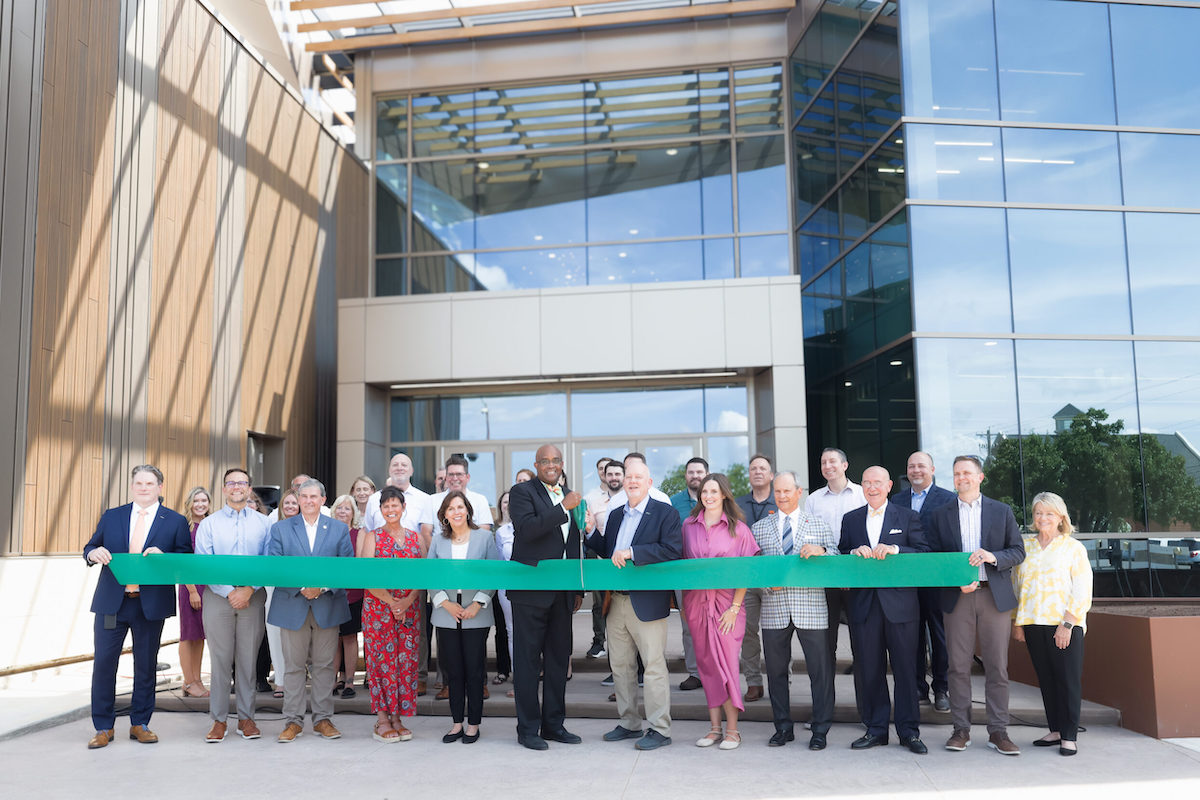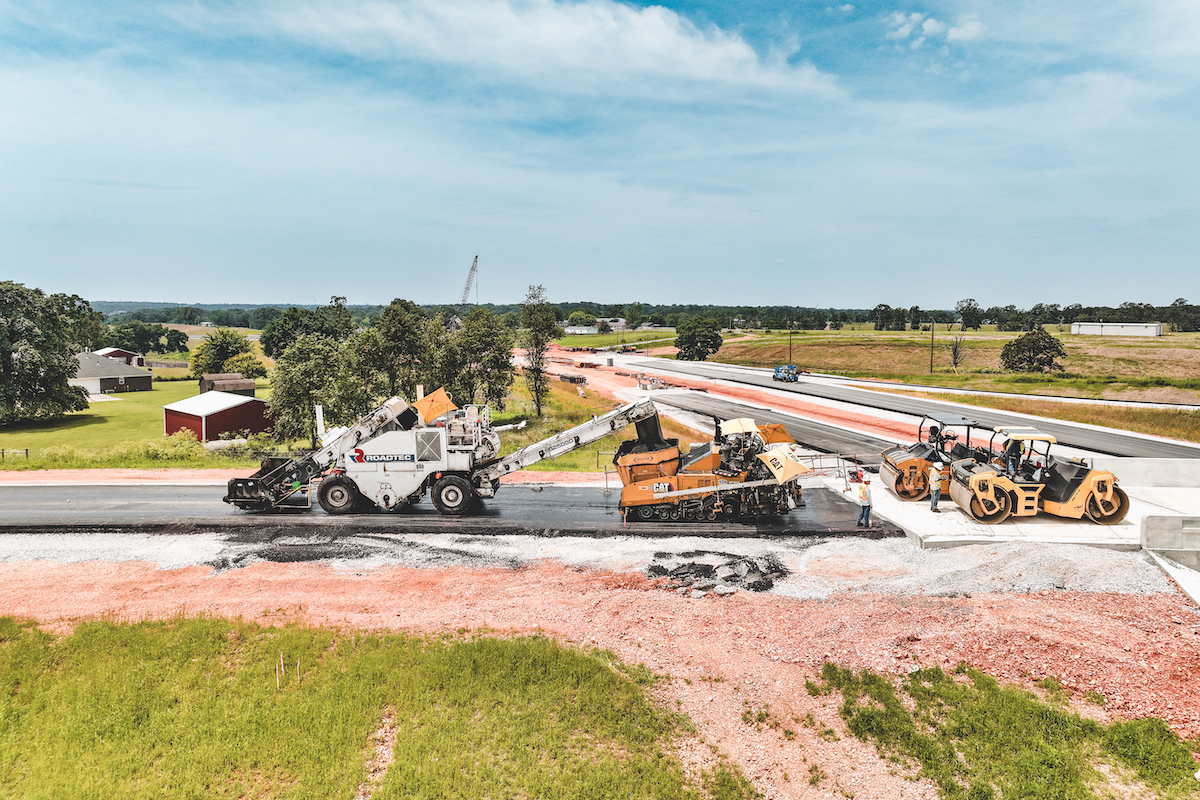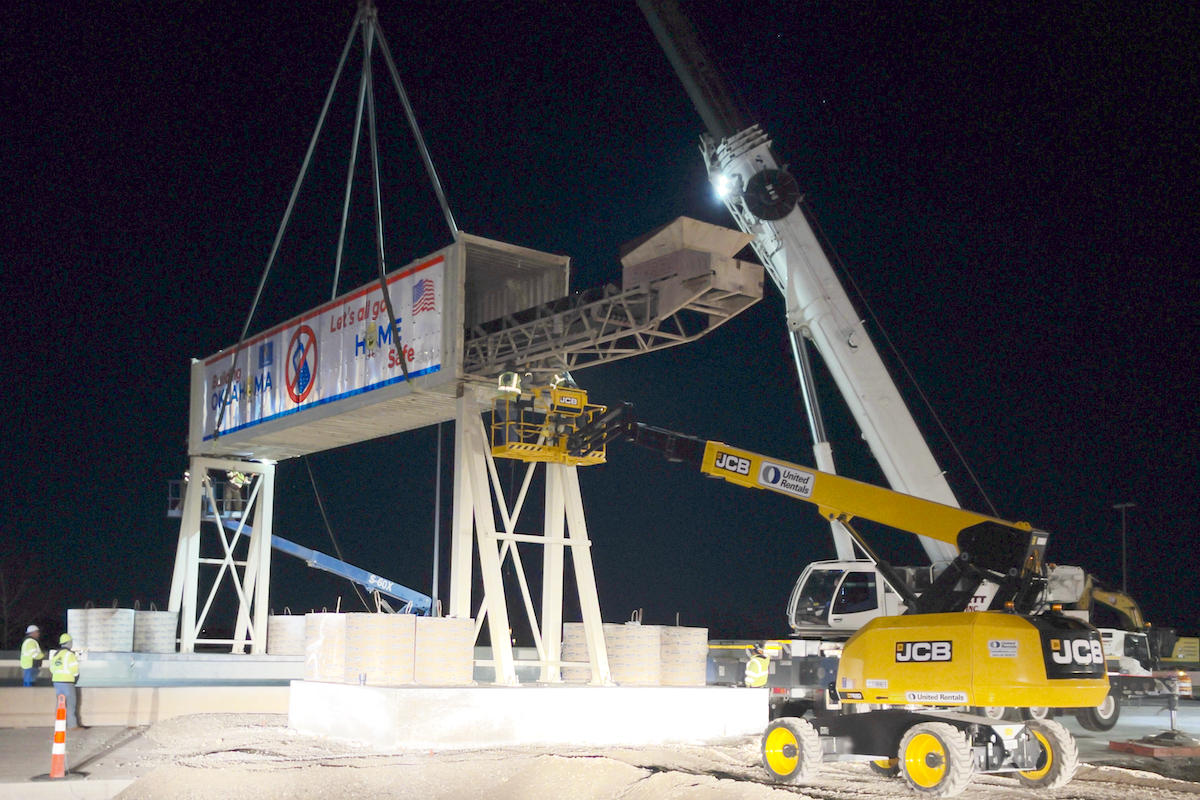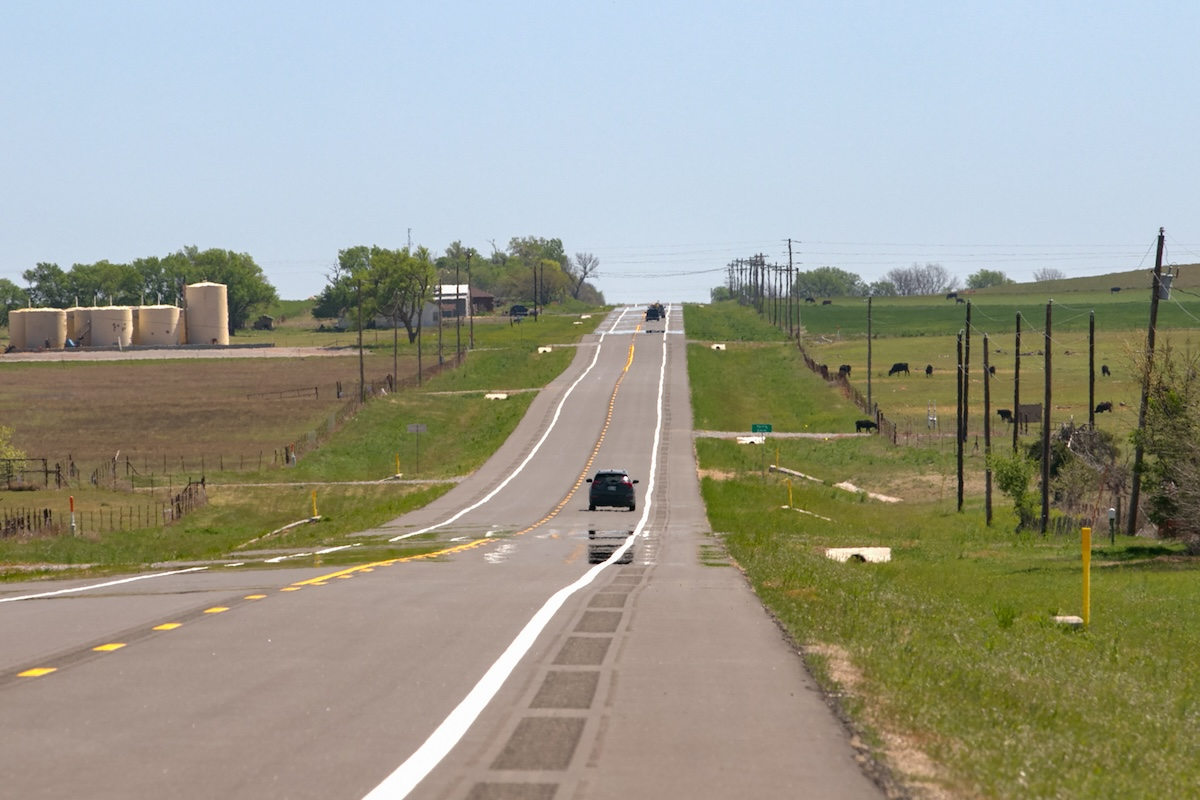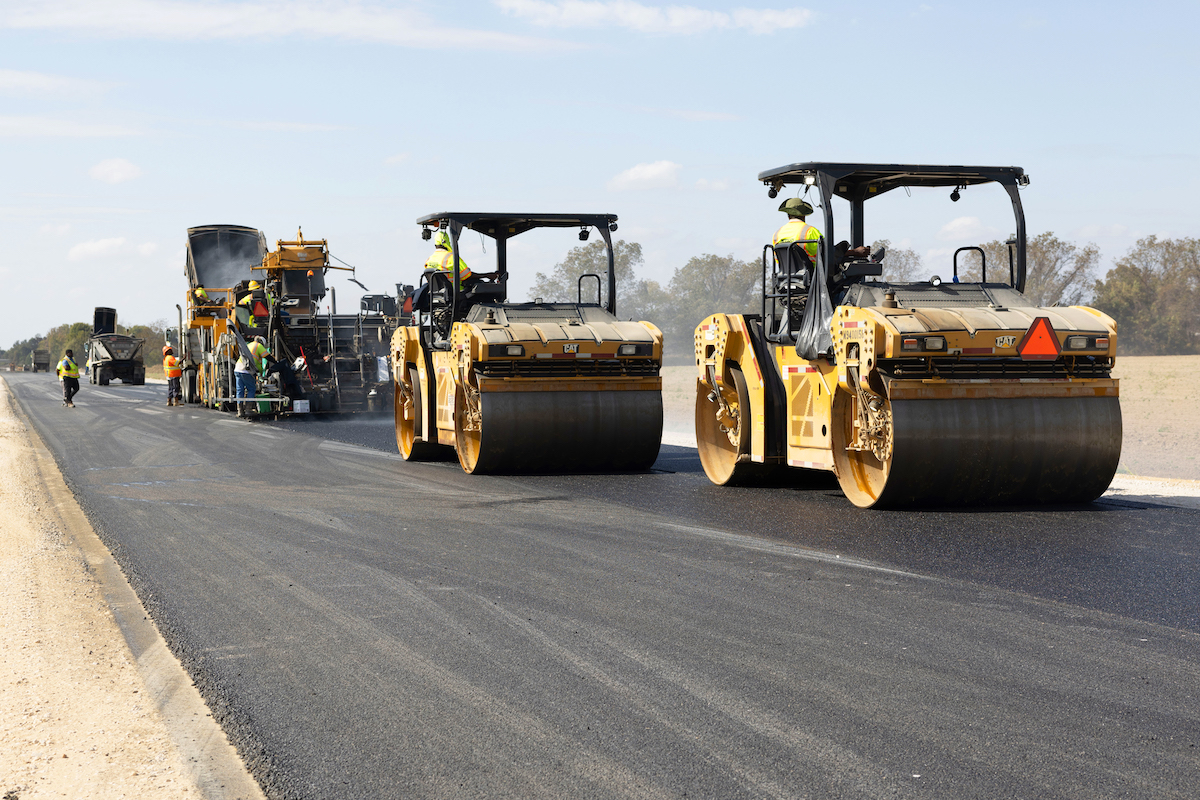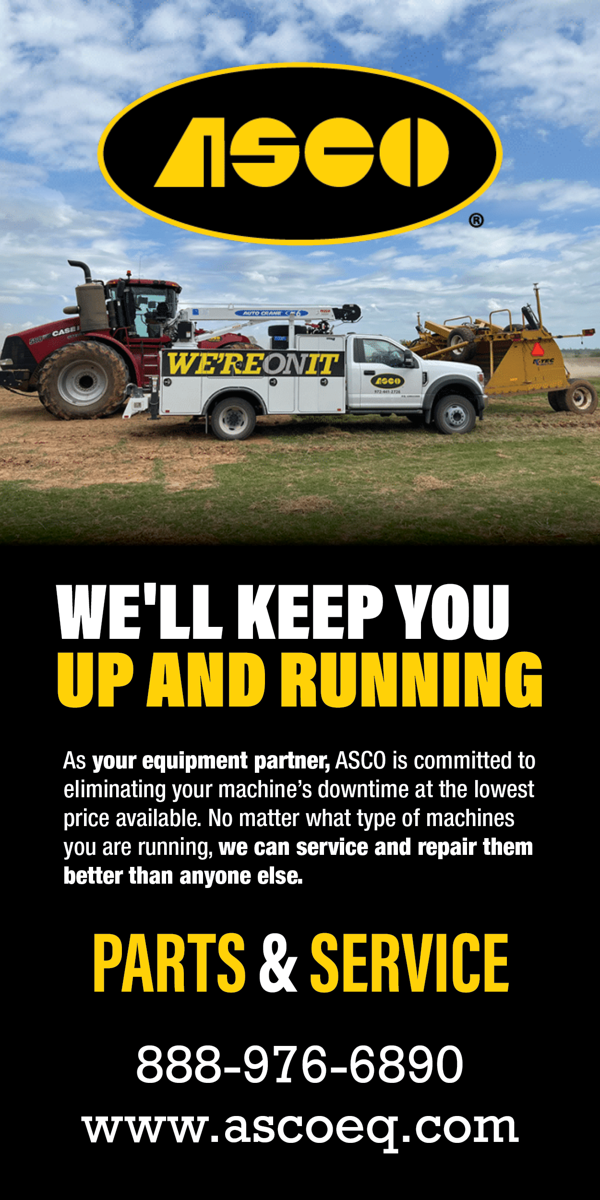“The bridges are roughly 60 years old and are considered functionally obsolete,” says Nick Clark, Muskogee Resident Engineer in ODOT’s District 1. “We are rebuilding the bridges to bring them up to modern standards.”
According to ODOT, the bridges show signs of fatigue. Repair would have required significant investment that is more practically spent on replacement.
The Arkansas River is part of the McClellan-Kerr Arkansas River Navigation System, also referred to as Marine Highway M-40. It serves the nation’s farthest inland, ice-free river port at the Tulsa Port of Catoosa, with many barges moving materials on the river.
The river bridge is approximately 1,550 feet long. The river bridges have all new drilled shaft foundations and 12-foot-tall steel girders. This is primarily a marine operation, with crews working off barges. Abutment work takes place on the land.

| Your local Trimble Construction Division dealer |
|---|
| SITECH Tri-Rivers |
Crews are also working on a rehabilitation of the 55th Street double bridges over 55th Street and parallel railroad tracks. These structures are being widened, rather than a full replacement. The bridges will have new steel girders and new decks.
The project was designed in house by ODOT engineers. All environmental issues were handled pre-construction in order to avoid slowing the project. The new structures are built in the same footprint, and no additional right-of-way was needed. Work began on the westbound bridge.
The project presented several challenges, including the “logistical planning of the placement and configuration of barges, including cranes and support equipment, and their staged movement through the demolition and foundation reconstruction,” says Todd A. Saxton, Senior Vice President of Manhattan Road & Bridge Co.’s Marine Division and Special Projects.
Additionally, the delivery of ready-mix concrete to the center-most piers by barge and structural steel erection all by barge were challenging aspects of the job.
“Marine construction requires greater planning – sizing and location of equipment resources – to minimize unnecessary movements of those resources,” Saxton explains.
Work began by demolishing the existing westbound bridge. Manhattan crews dissembled and removed the steel beam approach spans on both ends, Saxton reports.
“The main river channel steel girder spans were removed by controlled demolition methods – in stages and sections, permitting the shortest impact on river navigational traffic,” Saxton explains.
The U.S. Army Corps of Engineers allowed for the channel to close for 24 hours.
“Each stage was determined by the amount of steel-girder sections that could be removed within the 24-hour limit for the river’s closure to navigational traffic,” Saxton adds.
Crews pneumatically hammered and sheared the columns below the pier caps, allowing the cap to be removed in one piece. The rest of the columns and tie-beams were removed to water elevation. The team used a wrecking ball to demolish the large diameter main river channel piers.
“Controlled blasting demolition methods were used to remove the remainder of the foundation down to the river’s mudline,” Saxton says. “Demolition debris was then removed by crane and clam buckets.”
Each bridge requires the construction of seven piers, consisting of 14 drilled shafts, ranging in size from 6 feet in diameter to 12 feet in diameter.
“The largest diameter drilled shafts are between 60 feet and 70 feet in overall length,” Saxton reports. “Above the drilled shaft foundations are a lower tie-beam, lower columns, upper tie-beam, upper columns, and then the pier cap.”
Five-and-a-half million pounds of structural steel girders and rolled-beams support the superstructure of the bridge. The bridges will be paved with concrete.
In September 2023, most of the drilled shafts were in place. Crews were starting on the columns and pier caps. The new bridges will feature pier protections on foundations in the river.
“It’s quite the operation,” Clark says. “The sheer magnitude of this bridge is something I have not dealt with before.”
Crews have finished most of the work on the westbound 55th Street bridge.
“To say ‘it’s simple’ is not in our vocabulary,” Saxton concludes. “Every construction project has complex issues. Marine construction adds another dimension. While the best engineering, planning and selection of equipment resources is crucial, there is nothing more critical than the project’s blend of craftspeople who work safely and cohesively.”
During construction, all traffic has been moved to the eastbound bridge. As soon as westbound work completes, traffic will switch to the new bridge and work will commence on that eastbound structure, demolishing the old bridge and building the replacement.
Work on the 55th Street bridge follows the same traffic changes and patterns due to their proximity to one another, about half a mile apart. Therefore, even though the westbound 55th Street bridge is nearly complete, traffic will not switch until the river bridge traffic moves to the new structure.
Manhattan continues to work through the winter. ODOT expects the project to complete in spring 2025. Once finished, the new bridges should make people’s commutes easier and give them greater confidence driving over a new, wide bridge.
“With the magnitude of this project, all things considered, the progress has been great,” Clark concludes. “Everything has been going smoothly.”
Photos courtesy of Manhattan Road & Bridge Co.

















